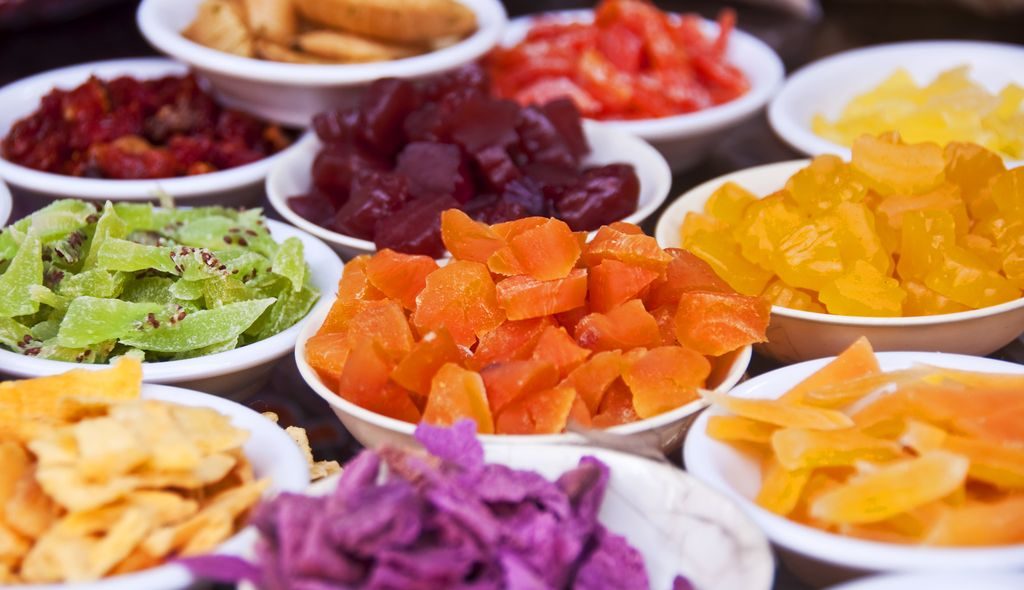Dried fruits
Dried fruit is very nutritious, but also contains a lot of sugar and calories.

Dried fruits refer to and fruit that has had almost all of its natural water content removed. most readily available dried fruits are raisins, dates, prunes, figs and apricots. During the drying process, the fruit shrinks considerably in size so they can be packaged and transported easily. They are sometimes packaged and sold with nuts. They are used mostly in baked goods like cakes or cookies.
Other common dried fruits include mangoes, pineapples, cranberries, bananas, apples the list goes on and on. Once fruit is dried it keeps for a much longer time than fresh.
Unopened
- In the pantry – 6-12 months
- In the fridge – 1-2 years
- In the freezer – indefinitely
Once opened but properly sealed
- In the pantry – 3-6 months
- In the fridge – 6-12 months
- In the freezer – 1year
(This is for most but not all dried fruits, fruits like bananas and figs spoil sooner)
Nutritional information
When it comes to the calorie content it depends on the type of fruit. You should check the nutritional information on the package.
Foods in their concentrated form have higher levels of nutrients and minerals per gram then that of the original fruit. Making it a good option for pregnant mothers as part of a balanced diet. Dry fruits contain vitamins like B1-B9, C, K, E, and H.
Diabetics should avoid dried fruits as they are concentrated versions of fresh fruits. Because of the lack of water, you have to eat a lot more dried fruit to sustain yourself so you could end up eating way more sugar than you realise!
According to the official NHS website 30g of dried fruit (the equivalent to around 80g of fresh fruit) counts as 1 portion of your 5 A Day.
Making dried fruit at home
If you want to be sure your dried fruit is completely organic and hasn’t had any extra sugar added you can make it at home!
- Wash fruit well in clean water.
- Remove any pits or stones from stone fruits and cut into even pieces so they dry at the same time.
- Preheat the oven to 170°F/77°C. If you have very thinly sliced fruit use a lower temperature, and a higher temperature for whole berries.
- To minimize discolouration while drying, soak water with a bit of lemon juice for 10 minutes. Then blot dry with kitchen paper.
- Line a baking tray with parchment paper and lay out your fruit closely but not touching.
- Place the try in the middle of the oven.
If you are really serious about dried fruit you can buy a dehydrator. This is a machine that is specially designed to take the moisture out of food.




